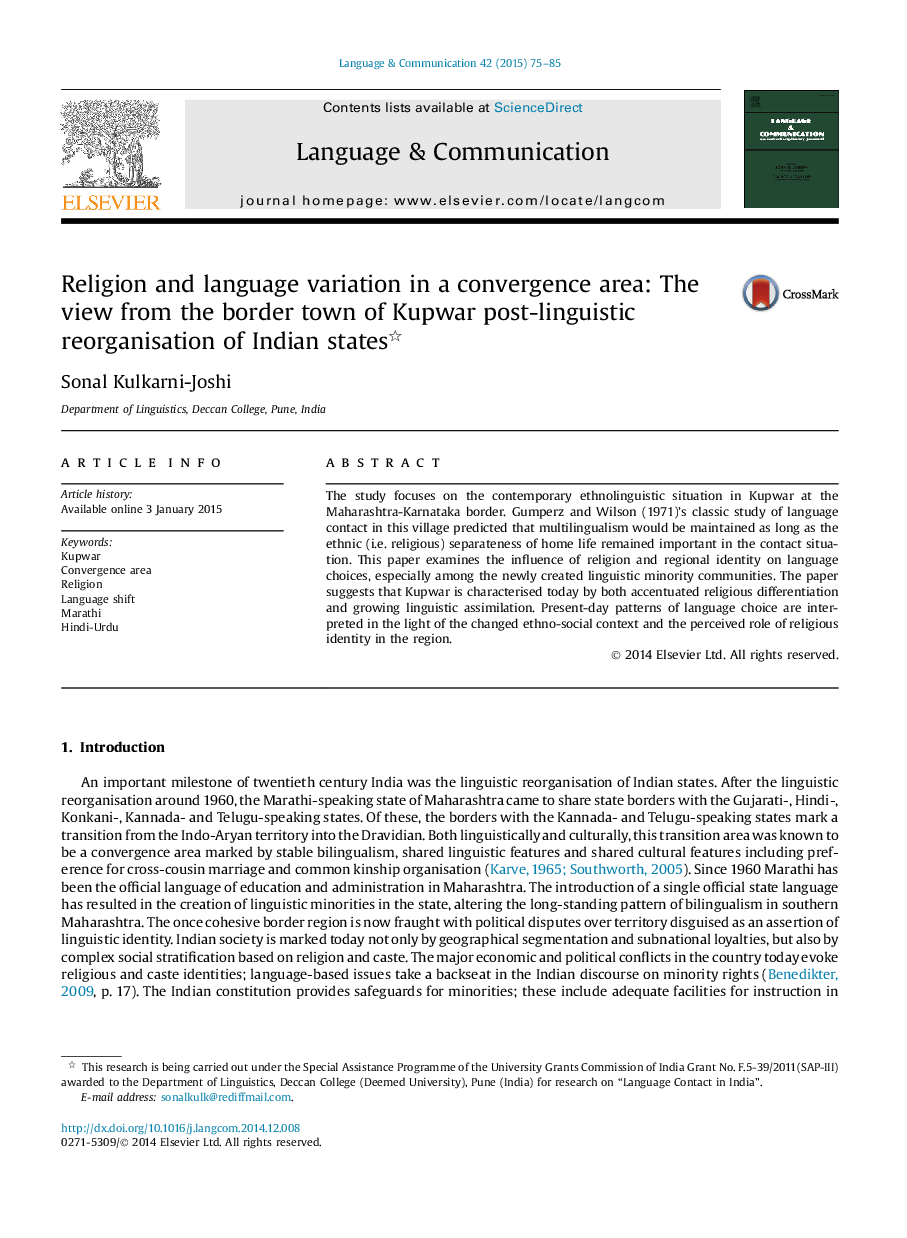| Article ID | Journal | Published Year | Pages | File Type |
|---|---|---|---|---|
| 934741 | Language & Communication | 2015 | 11 Pages |
•This study revisits Gumperz and Wilson's (1971) classic study of language contact in the border village of Kupwar.•Linguistic reorganisation has impacted this multi-religious, multi-lingual village.•Increased awareness of religious identities and assimilation towards the state language were observed.•Different religious groups have differing relations with new language of opportunity.•Acceptance of new state language as language of religious practice paves path for language change.
The study focuses on the contemporary ethnolinguistic situation in Kupwar at the Maharashtra-Karnataka border. Gumperz and Wilson (1971)'s classic study of language contact in this village predicted that multilingualism would be maintained as long as the ethnic (i.e. religious) separateness of home life remained important in the contact situation. This paper examines the influence of religion and regional identity on language choices, especially among the newly created linguistic minority communities. The paper suggests that Kupwar is characterised today by both accentuated religious differentiation and growing linguistic assimilation. Present-day patterns of language choice are interpreted in the light of the changed ethno-social context and the perceived role of religious identity in the region.
